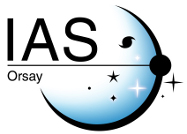The cosmic far-infrared background buildup since redshift 2 at 70 and 160 microns in the COSMOS and GOODS fields
| Titre | The cosmic far-infrared background buildup since redshift 2 at 70 and 160 microns in the COSMOS and GOODS fields |
| Type de publication | Journal Article |
| Year of Publication | 2011 |
| Auteurs | Jauzac, M, Dole, H, Le Floc'h, E, Aussel, H, Caputi, K, Ilbert, O, Salvato, M, Bavouzet, N, Beelen, A, Bethermin, M, Kneib, JP, Lagache, G, Puget, JL |
| Journal | Astronomy & Astrophysics |
| Volume | 525 |
| Date Published | Jan |
| ISBN Number | 0004-6361 |
| Numéro d'accès | WOS:000285193700114 |
| Résumé | Context. The cosmic far-infrared background (CIB) at wavelengths around 160 mu m corresponds to the peak intensity of the whole extragalactic background light, which is being measured with increasing accuracy. However, the build up of the CIB emission as a function of redshift is still not well known. Aims. Our goal is to measure the CIB history at 70 mu m and 160 mu m at different redshifts, and provide constraints for infrared galaxy evolution models. Methods. We used deep Spitzer 24 mu m catalogs complete to about 80 mu Jy with spectroscopic and photometric redshift identifications, derived using the GOODS and COSMOS deep infrared surveys covering 2 square degrees total. After cleaning the Spitzer/MIPS 70 mu m and 160 mu m maps of detected sources, we stacked the far-IR images at the positions of the 24 mu m sources in different redshift bins. We measured the contribution of each stacked source to the total 70 and 160 mu m light, and compared with model predictions and far-IR measurements obtained for Herschel/PACS data of smaller fields. Results. We detect components of the 70 and 160 mu m backgrounds in different redshift bins up to z similar to 2. The contribution to the CIB reaches a maximum at 0.3 <= z <= 0.9 at 160 mu m (and z <= 0.5 at 70 mu m). A total of 81% (74%) of the 70 (160) mu m background was emitted at z < 1. We estimate that the AGN contribution to the far-IR CIB is less than about 10% at z < 1.5. We provide a comprehensive view of the CIB buildup at 24, 70, 100 and 160 mu m. Conclusions. We find that IR galaxy models predicting a major contribution to the CIB from sources at z < 1 agree with our measurements, while our results exclude other models that predict a peak of the background at higher redshifts. The consistency of our results with those obtained by the direct study of Herschel far-IR data at 160 mu m confirms that the stacking analysis method is a valid approach to estimate the components of the far-IR background using prior information about resolved mid-IR sources. |



